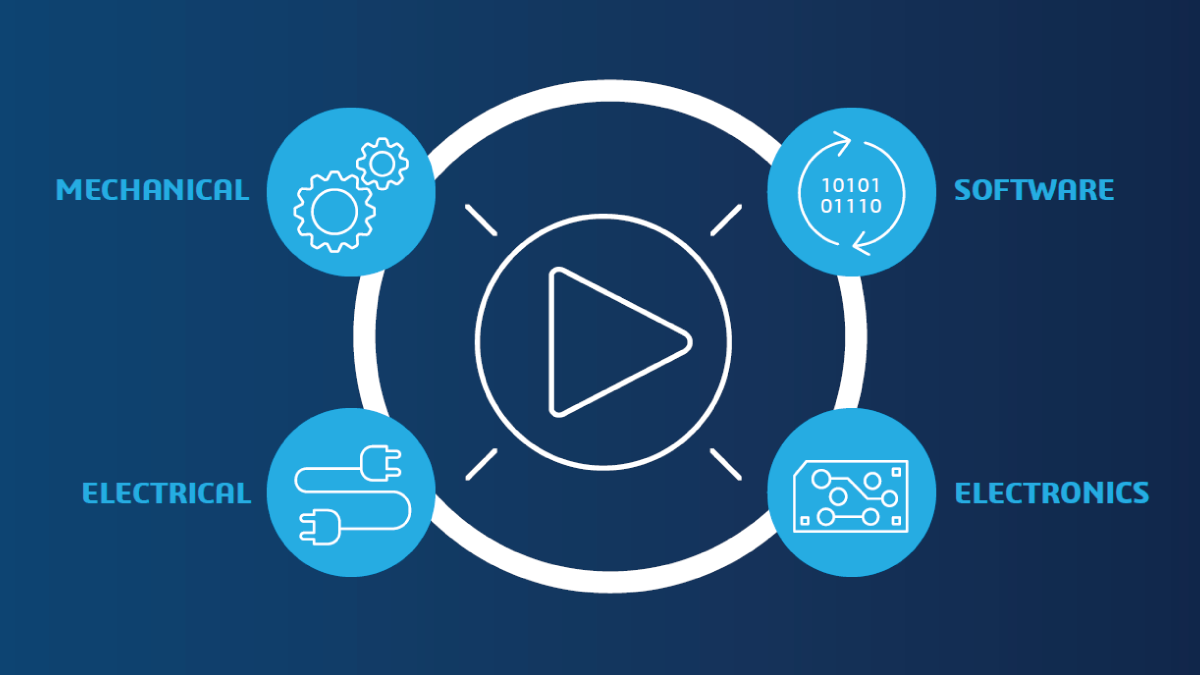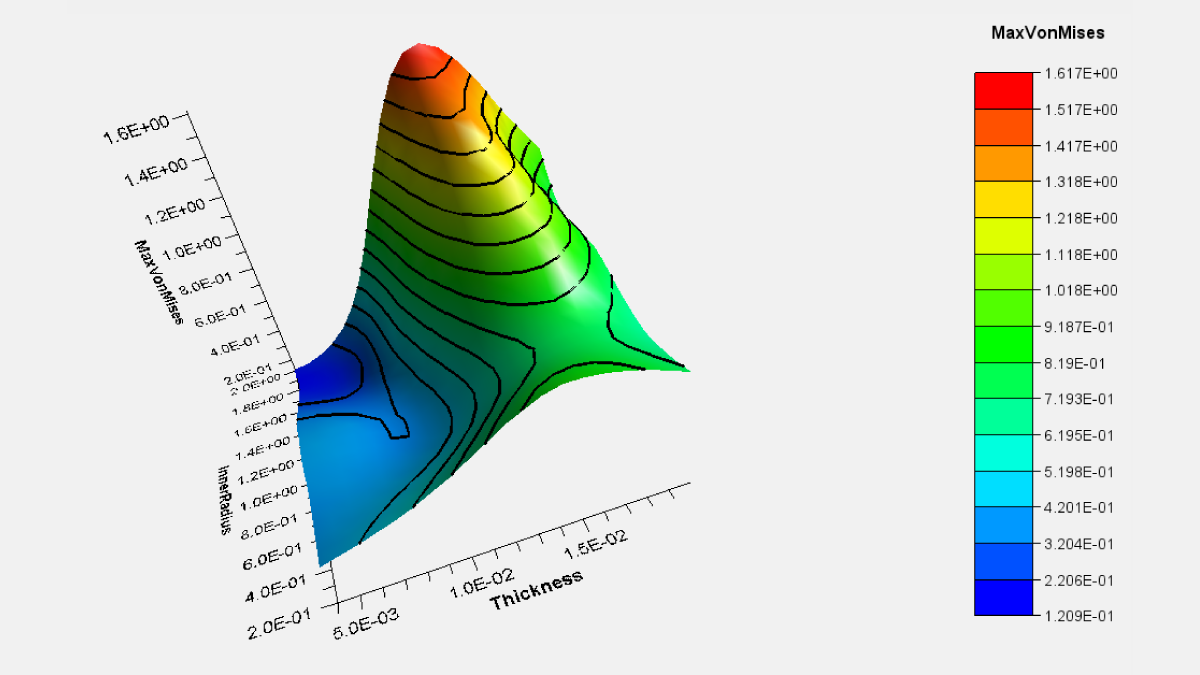When a product design workflow is dependent on simulation results, the length of time it takes for simulations to run to completion can have a significant impact on project deadlines. The impossibility of turning around multiple design/simulation iterations in a relatively short period of time, without significant investment in hardware and licensing has been a widely accepted paradigm. However, recent developments with cloud computing and licensing are disrupting that commonly accepted paradigm.
The driver for simulation is to provide design feedback in as short a time as possible to cut down product development cycle time, see Figure 1. As the product design progresses, changes to the design become increasingly more expensive and thus settling on the final design as early as possible in the process saves both time and money. Simulation can and should be used to get to that final design in as quick a time as possible.
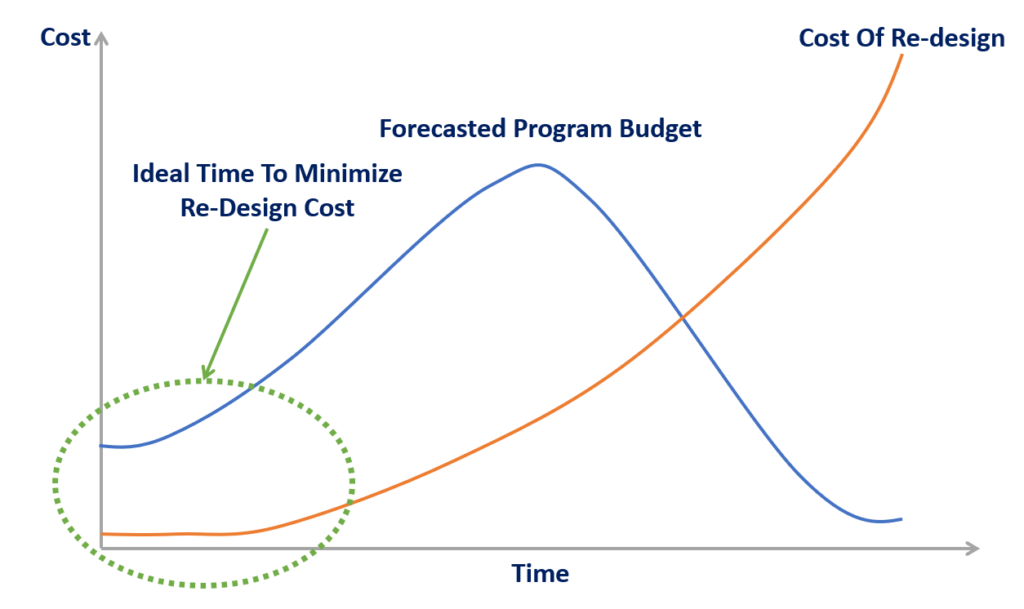
The Simulation Throughput Compromise
The challenge is that simulation tools such as Abaqus, CST, PowerFLOW, etc. are compute intensive and require significant investment in computer hardware and commensurate investment in licensing to maximize the hardware investment and simulate efficiently. This balance of appropriate hardware and licensing is difficult to determine and there is often extensive debate in settling on a desired simulation throughput versus cost (budget). Experience has shown that the usual outcome is most often governed by the budget and requires a degree of compromise on the simulation throughput.
Simulation throughput or license utilization can be classified as Sustained or Peak and usually the licensing discussions and solutions meet the needs for Sustained simulation throughput but not the Peak or occasional demand as shown in Figure 2.
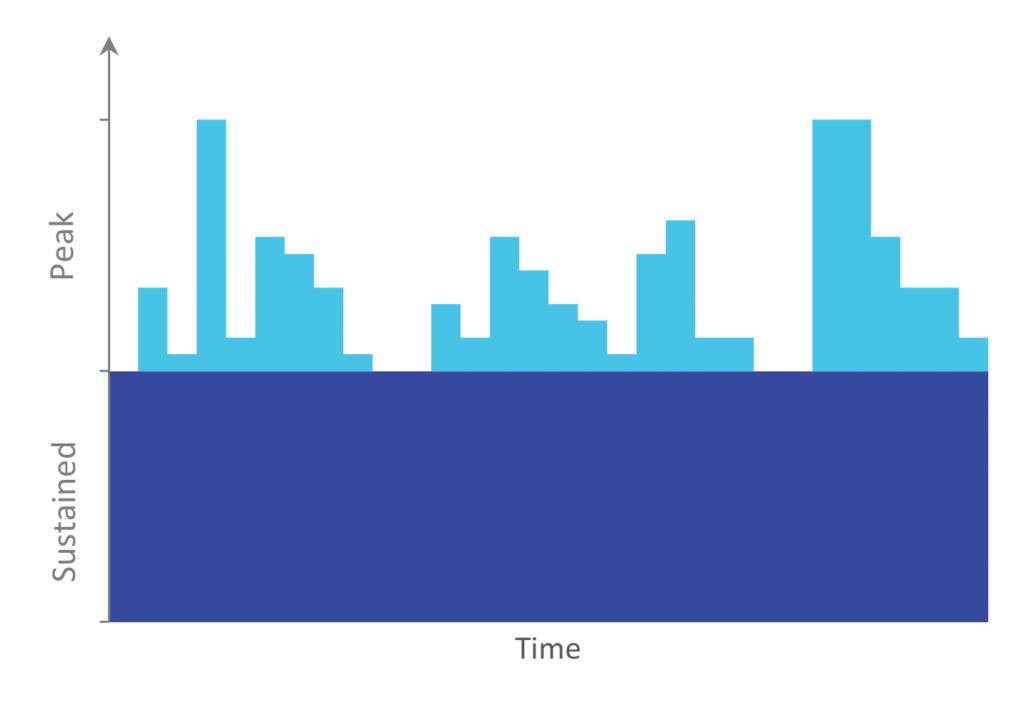
For Sustained license utilization, we mean a typical simulation workload over a specified time i.e. how many simulations you run in a day multiplied by the number of analysts running those simulations.
Peak license utilization is when we see the maximum demand on licensing, above Sustained and is often restricted by hardware and licensing. To help manage these Peak times there are several solutions but by far the most common is using a Job Scheduler. The Job Scheduler manages the simulations by assigning them to one or more queues that delay the simulation until resources are available at which point the simulation begins to run. The compromise here is that by queuing the simulation you are increasing the wait time for the simulation.
No More Simulation Queue Delays
An alternative model in the form of Dassault Systèmes’ SIMULIA cloud computing on the 3DEXPERIENCE platform allows for simulation processing flexibility to meet Peakor occasional demand. It provides access to solvers for SIMULIA software and is coupled with the harmonized license scheme referred to as SimUnits. Although SimUnits are also available On Premise, in this blog we focus on the On Cloud licensing which provides the flexibility to leverage near infinite high performance cloud computing (HPC) resources to dramatically improve analysis run time performance or significantly reduce the wait time for simulation results. The ultimate impact of this model being faster product development, or shorter time to market.
SIMULIA SimUnits On Cloud Licensing
On Cloud SIMULIA SimUnits offer both a Token and Credit model to access SIMULIA software applications.
A Token is made available in a license pool, allowing anyone with the software pointing to the license pool to Check Out the Token. Once they have finished using the token it is returned to the license pool for reuse. Taking Abaqus as our example, we are familiar with the concept that to run a simulation on a specific number of cores requires a specific number of tokens. Increasing the core count on a simulation increases the number of tokens that are checked out to run it, and there is thus an upper limit to the computing power based on the number of Tokens in the pool. If you run a simulation that requires more tokens than are currently available in the pool, it will queue until sufficient Tokens are available. Tokens are thus the preferred choice when you have a Sustained simulation workload within constant or consistent demands.
A Credit is also available in a license pool but is a form of consumable licensing. Once Checked Out it is deducted from the total credit count and not returned to the license pool. Credit usage is measured based on the number or core hours. The number of credits consumed thus depends on the complexity of the simulation and how quickly you would like the simulation to be completed. Credits are typically used to meet Peak or occasional demand, or to access additional computational resources beyond the token limit.
While both SimUnit Tokens and Credits can be used for on cloud simulations computing, any individual simulation must utilize only one of these, either 100% SimUnit Tokens or 100% SimUnit Credits.
Licensing can be purchased in packages optimized to meet your simulation needs, see Figure 3. SimUnit Tokens and Credits provide unified licensing in the form of a common pool of credits and tokens for simulations across the entire SIMULIA portfolio of products – Abaqus, Isight, Tosca, fe-safe, CST, XFlow, Simpack, PowerFLOW, 3DEXPERIENCE simulation roles – whether on cloud or on premise.
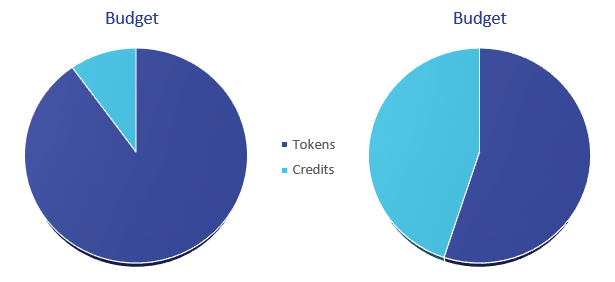
SimUnit Tokens and Credits Budgeting
For traditional licenses comprised solely of tokens, typical utilization is reported to be around 25% and rarely higher than 50%. This can occur for a variety of reasons: many users run analysis only during working hours which represents approximately 25% of the week, larger users may have a baseline of sustained workload and commonly run simulations afterhours but also have additional capacity for peak demand that is infrequently used, while some users may have lower or infrequent simulation demands, to list a few. Depending on the reason different breakdown of SimUnit Tokens and Creditswill be appropriate.
Considering first the case of having to accommodate additional Peak simulation throughput using only Tokens. Here the options are limited to either increasing the number of tokens to get the simulations in a timely manner, resulting in some number of unused tokens, or keeping the number of tokens the same and increasing the time over which the simulations are completed – see the first two images of Figure 4. In many cases, the cost of waiting may be greater than the cost of additional tokens. However, when accommodating Peak simulation throughput using Tokens and Credits, the number of each can be optimized to minimize the simulation cost and time while fully utilizing the purchased computing resources. Analysis benchmarking can be a key component in calculating this optimization, as it’s possible to determine the optimum number of CPUs needed for different simulations when cloud computing resources are available.
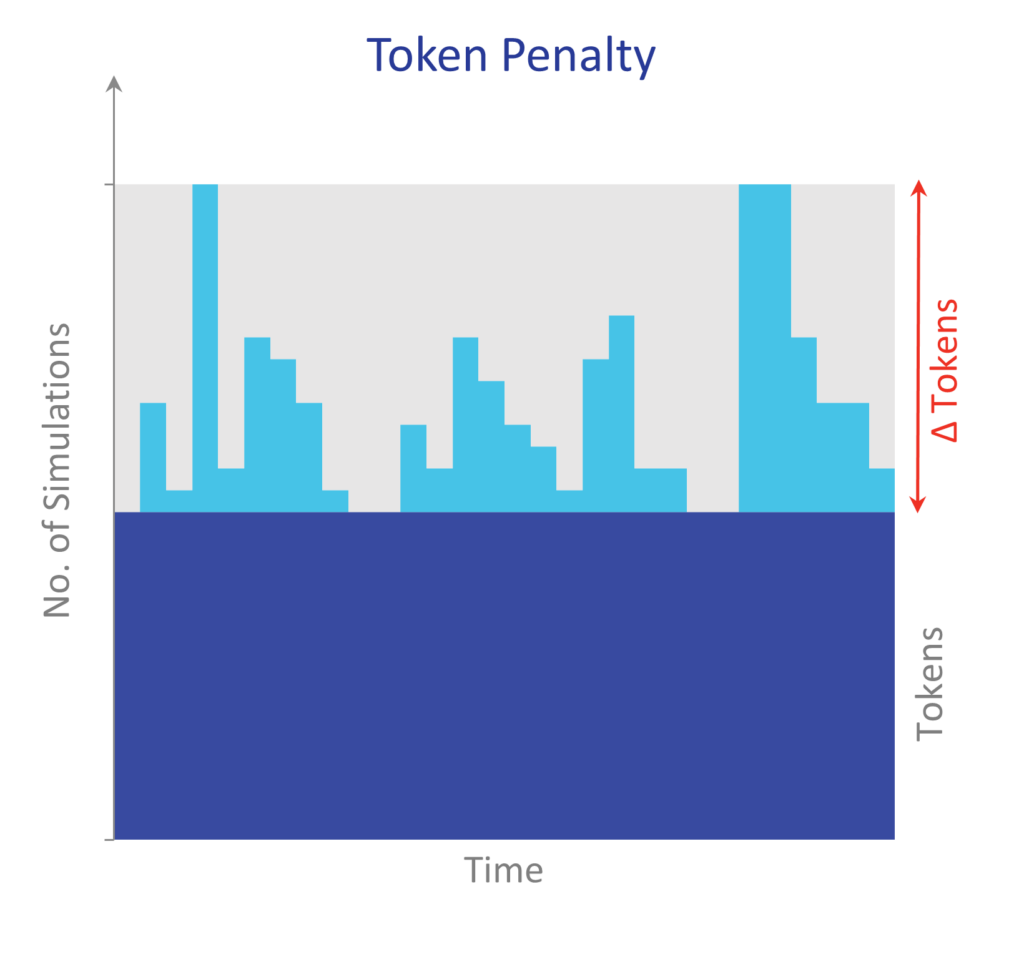

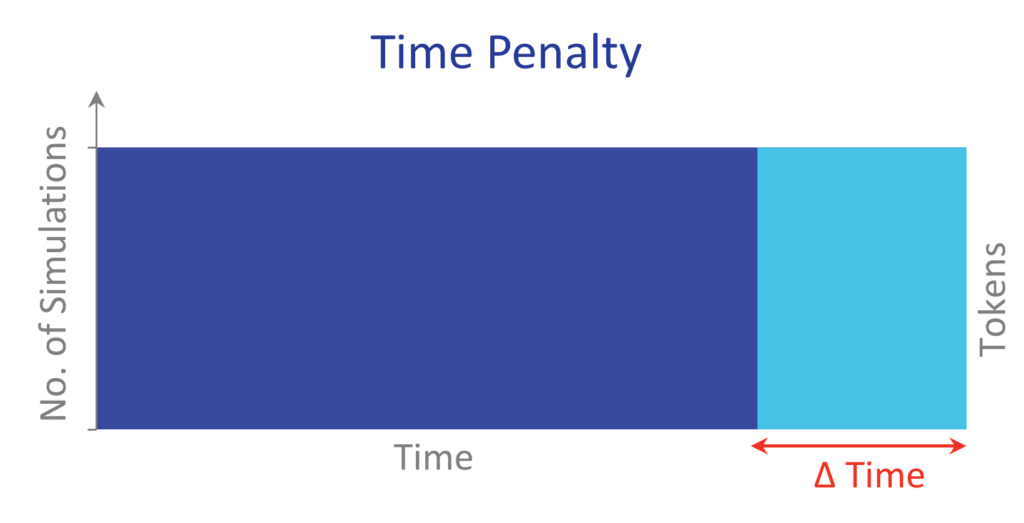

Every analysis will have an optimal run configuration in terms of computational resources in the form of CPUs. This optimum can be determined using benchmarking which is completed by running a given model on an increasing number of cores to determine the optimal configuration in terms of hardware and licensing. When the use of additional cores does not offer substantive gains in analysis efficiency, then the optimum is established. In Figure 5, the normalized run time of a large explicit and standard job are compared. These jobs run most efficiently on a high core count as can be seen by the downward trend in run time. Because of the computational demands associated with breaking the simulation into domains for parallelization, there is a non-linear relationship between number of cores and credit run time.
Considering now the consumption of credits to run different types of analysis shown in Figure 6. These large jobs use the fewest credits when run on the highest core count as the credits are consumed on a per core hour rate. This is shown clearly in Figure 7 where both the run time and credit consumption are minimized through the use of 144 cores.


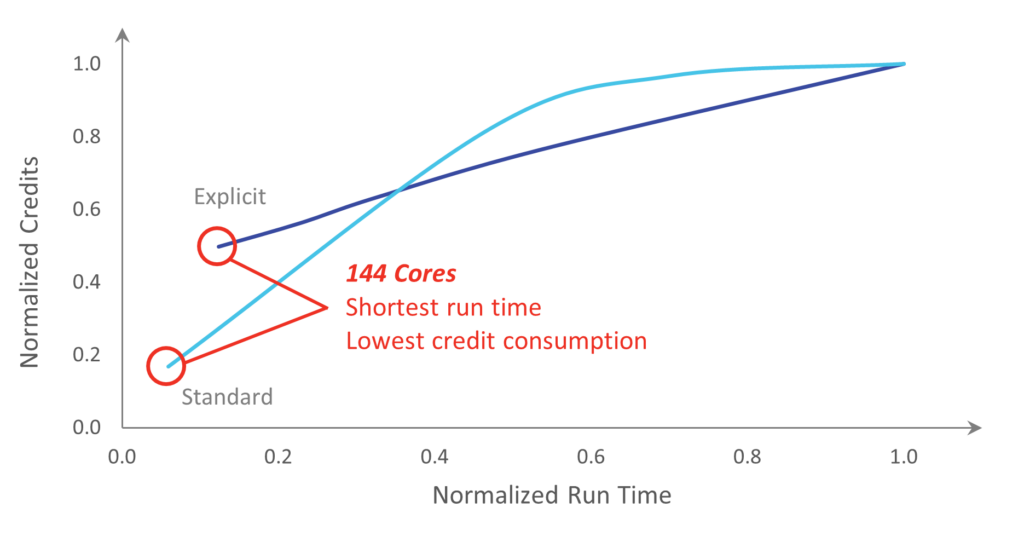
Hybrid Model of On Premise and On Cloud Computing Available
SIMULIA software users can also adopt a hybrid solution of on premise and on cloud computing to efficiently address fluctuating simulation workloads. For companies wanting to maintain on premise capabilities, reconfiguring their current simulation tokens budget to include on-demand cloud computing resources is a compelling solution to scale simulation processing as needed when local computing is not as hardware and software efficient, or the simulation queue is too long to meet product development objectives.
Cost Savings
We’ve demonstrated that by running simulation leveraging On Cloud SimUnits on the 3DEXPERIENCE platform, users can optimize run time to reduce computational expense. However, an additional economic benefit of cloud computing is the access to externally managed hardware and software. Dassault Systèmes manages all cloud-based resources, and software updates are rolled out throughout the year to ensure users have access to the most current capabilities as soon as they are available. This task can be a burden on already busy IT teams when software is stored and managed locally. By moving to a cloud computing system, this burden is offloaded and the hardware and software management expense is included by accessing SimUnit Tokens and Credits.and managed locally. By moving to a cloud computing system, this burden is offloaded and the hardware and software management expense is included by accessing SimUnit Tokens and Credits.
Related Blog
Check out our related blog to learn how to run a simulation job using On Cloud SIMULIA SimUnits.
Other Resources
ON-DEMAND WEBINAR
Faster Product Simulation Processing on the Same Budget
Learn how users of SIMULIA software apps can scale simulation throughput as needed with a hybrid model of on premise and on cloud computing to efficiently address fluctuating simulation workloads and meet peak or occasional needs, at no extra cost.
Questions?
If you have any questions or would like to learn more about cloud computing using SIMULIA SimUnits, please contact us at (954) 442-5400 or submit an online inquiry.


